Ryanair might soon start trans-Atlantic flights, but what does it mean?
At face value, this may seem like an earthshaking headline; after all, Ryanair has been either threatening or strongly implying that they will fly from various European airports to the United States.
But again, the truth is always in the details. Yes, Ryanair will be arriving on U.S. soil, but not tomorrow — not even next year. You see, the exact wording of the approval came in the form as part of their five-year plan.
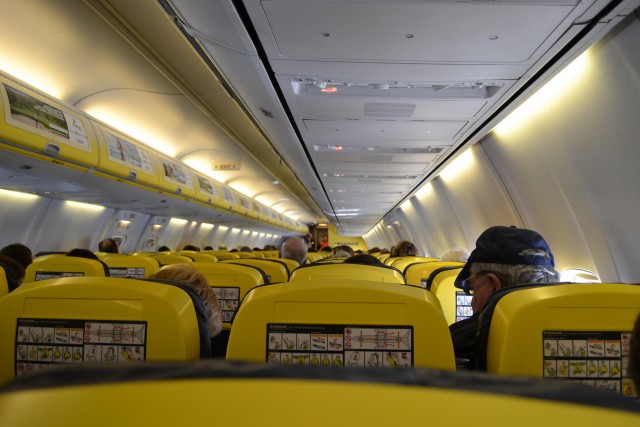
You might have an opportunity to stare at the yellow cabin during longer flights – Photo: David Precious | FlickrCC
It is alleged that the airline is investigating flying to various U.S. Airports from at least “a dozen” gateways. The catch? This is on condition of Ryanair being able to procure adequate long-haul airliners. They’ve given themselves a timeline of four or five years for this to happen.
What, then, will Ryanair purchase for the new long-haul arm? With fares being planned to be offered, at least promotionally, for roughly ten dollars, they are going to have to get something capable of ridiculous unit cost. True, their current all-737-fleet can offer this on short-hauls, as will their future fleet of MAX200s, but when the distance begins to exceed 3,000 statute miles, an airline is going to need more seats to compete on a per-flight basis. Especially when they’ll now be competing with airlines that offer more than the capacity of an entire 737 in economy class alone.
Serving their twelve destinations, we can assume that Ryanair will need roughly fifteen widebodies, maximum of twenty if they start expanding to the U.S. West Coast.
Ryanair is an enigma when it comes to aircraft purchase. While Michael O’Leary (their CEO) has made some famously off-color comments about the process by which they acquired their current fleet of 737-800s, they have also shown great loyalty to Boeing since. Now, of course, no company is going to disclose the results of their negotiations, but we can assume that both Ryanair and Boeing want to not only remain on good terms, but to have Ryanair continue as a single-supplier fleet.
Seems rosy on the surface. However, given the fact that Boeing’s future long-range narrowbody to compete with the A321LR (the rumored 737-8ERX) is not going to be available in Ryanair’s timespan, things start to wilt with Boeing.
Ryanair already has up to 200 737-8 MAX and 737-MAX200 on order, but neither of these aircraft are going to be able to be full of enough high-yielding passengers to make their economics work for low-cost long-haul. The MAX200 wont have the range, while the 800ERX/800MAX will lack the capacity.
On top of this, Ryanair has never been one for multiple galleys, let alone multiple hot meals. Their 737 configuration (at least that of today) would not translate well even to selling hot meals, multiple times, across an ocean. So, if we assume that the 737 is, at least long-term, a non-starter for a transatlantic Ryanair venture, what can Boeing offer them?
The 787 would be an obvious choice, except Boeing is experiencing unprecedented demand for the frame. Today, Boeing is facing a very long backlog and has little incentive to discount their star product what so ever.
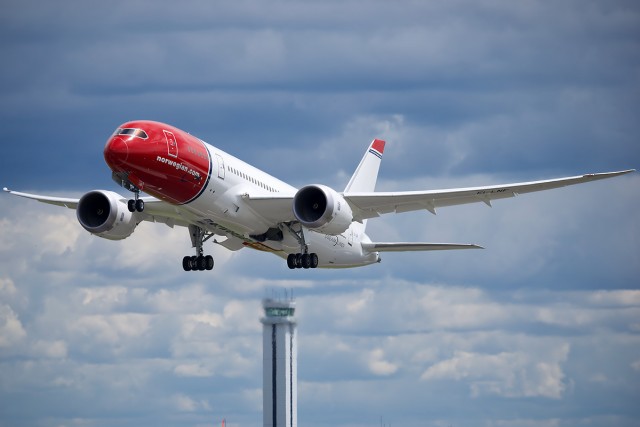
Norwegian uses the 787 on low-cost intercontinental flights. Perhaps Ryanair will as well. Photo – Bernie Leighton | AirlineReporter
The 787, however, is proving itself an outstanding platform for low-cost long-haul. Scoot can place 375 seats in a 787-9 (including 35 premium economy), Jetstar can manage 335 in a 787-8. If that wasn’t enough, ANA can manage 395 seats for a domestic 787-9. There is nothing in the air, right now, in that size class that can beat those kinds of unit costs. Not to sound like a 787 brochure, but it would be a fantastic frame for Ryanair should they be able to get past the sticker price.
A 787-10 at a later date would give Ryanair unprecedented capacity and economics. That said, I don’t think they’ll order it. Not because the aircraft is too good, but because it offers a cargo capacity Ryanair has not yet chosen to add to their business model. Cargo loading/offloading, sorting, forwarding, and the lot all has a cost. Ryanair is trying to reduce those. While Ryanair may branch out into the international bellyfreight game, they would be flying a lot of empty plastic across the Atlantic. Ryanair would never want to pay for too much aircraft, at least under their current leadership.
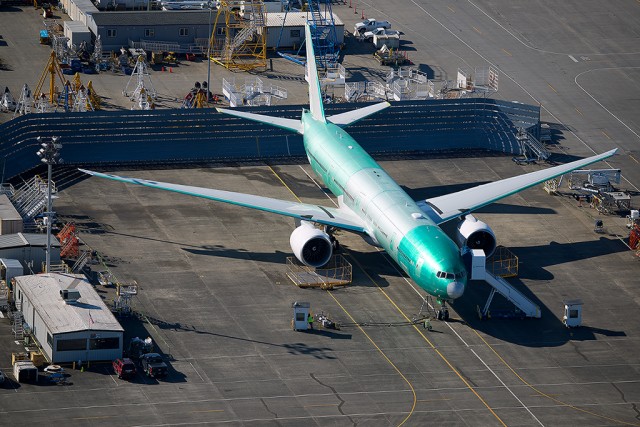
Boeing is looking for customers to bridge the gap between the sunset of the 777-300ER and the beginning of the 777-8 and 777-9 Photo: Bernie Leighton |AirlineReporter
While some suggest the 767-300, as it can still be ordered from Boeing, it just doesn’t seem competitive long-term. It’d be a nice idea, but the frames would have no resale value, let alone competitive costs with the legacy airlines that will fight tooth and nail against them.
The dark horse option centers around the fact that Boeing has found a way to not only add 14 more seats to the 777-300ER, but also improve fuel-burn by two percent. Furthermore, Boeing is looking for customers to bridge the gap between the wind down of that 777 series, and the spool up of the 777-8 and -9. A 550-seat Boeing 777-300ER in the Ryanair stable would do them quite well. The problem with that stems from the fact that Ryanair will only have a select few routes where 550 passengers will want to fly them, but they will not want to leave the commonality aspect out of whatever they purchase.
While a fully-loaded 777 offers 747-killing economics, an empty one is hauling tons more structural weight, burning more fuel, and not carrying revenue freight. Long story short; it’d be a huge gamble.
If Ryanair orders Boeing, I think the fact that they are exploring “at least a dozen” destinations is the clue to the fact they want 787s. It’s the only Boeing family that would offer them the necessary flexibility to both right-size capacity and keep trip costs low.
What can Airbus offer?
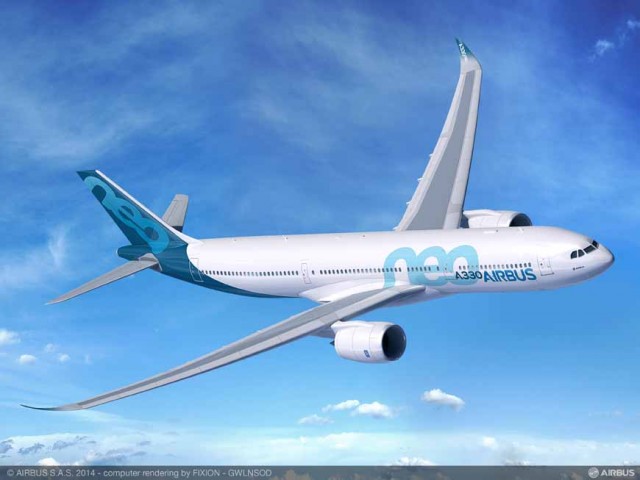
The Airbus A330-900neo – Image: Airbus
The A330-800 or -900NEO would be reasonably safe bets. Relatively low acquisition costs, economics within spitting distance of the 787, and availability within the timeline the board specifies. There are lots of A330 crews that could be easily recruited from elsewhere, as well as dozens of certified MROs that could handle the overall upkeep of such a frame.
Either variant could make the trip from Western Europe to Los Angeles, so range is not an issue. Airbus is building six A330s a month, so the timing for delivery would be perfect. It is also a relatively low-cost option, especially if Ryanair went through a lessor. It would be a great way for Ryanair to enter the long-haul market. The question, however, is what would their cabin configuration look like?
Despite all the bluster of the past, Michael O’Leary has said he wants to make Ryanair more appealing to customers. Would they opt for 16.5″ width and nine abreast (9Y)? If they do, they could probably get about 475 seats into an A330-900NEO. Would anyone pay for it? Good question. I am not even sure Ryanair has finalized their market segmentation for long-haul.
I would suggest that they are doing the responsible thing and watching as the legacy carriers race to their level before they pounce. If Ryanair were competing in a space where something like Air Asia or Jetstar already existed, you bet they’d order A330NEOs in 9Y — it would be the only way to survive. I am not a betting man, but the A330NEO seems like the perfect aircraft family to get their feet wet in the long-haul arena.
Except. One can obtain a 10-abreast (10Y) Airbus A350.
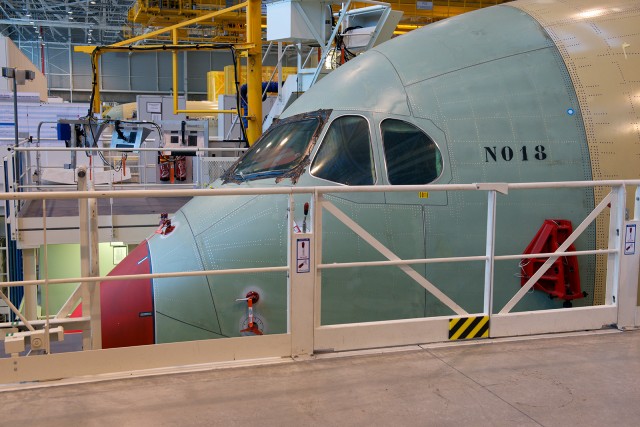
The A350 might just be light enough to meet the needs of an LCC – Photo: Bernie Leighton | AirlineReporter
While it is slightly unclear just how many more seats you can get in a 10Y A350, it would certainly make the unit cost of a full one downright obscene. The problem arises from the issue that due to the optimizations for the larger Pacific and Mid-Eastern customers, the variant that was once the light-weight CASM king of the family (the A350-1000) is now more of a freight hauling, ultra-long-range monster. That’s a lot of airplane on a six-hour hop from the New York area to Western Europe. Not that it lacks the potential to earn a profit, just that low-cost carriers are concerned about all costs. Why pay landing charges for an aircraft where its extra weight is a hindrance, not a boon? Even the lighter A350-900’s regional variant comes as a paper deduction.
The final two questions, ones that would throw the economics of the order into complete disarray, is whether or not Ryanair would offer any sort of premium product. If they do, and they live up to the boast uttered by Michael O’Leary more than half a decade ago, that is going to take up a lot of cabin real-estate. Furthermore, if Ryanair gets into the bellyfreight game, they might not care about the weight penalties aircraft designed to hang out at the edge of the payload/range curve often bring with them.
No matter what, Ryanair is coming and we as AvGeeks and consumers get to enjoy whatever that means.
Comments are closed here.
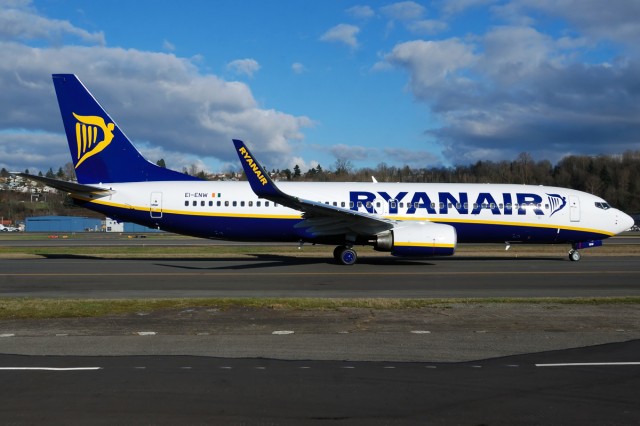
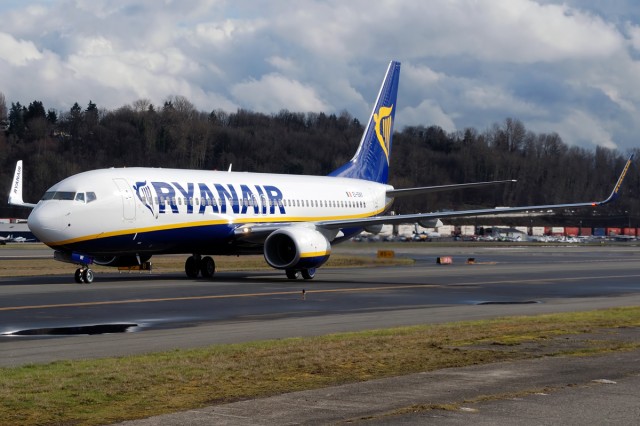
Have you guys considered getting a mobile friendly website?
Bradley,
It is on our very long to-do list. We all work other jobs and work lots of hours to keep AirlineReporter up and running. A total re-do of the site will happen sometime this year, but other things keep popping up. Thanks for being patient.
David, AirlineReporter
Hilarious, whether intended or not.
Just to be sure about the territory, please correct me if I’m wrong, anyplace: Michael O”Leary runs Ryanair. That’s the same Intra-European ULCC airline that wanted to put coin slots on the lav doors, replace their already roughly 18″ pitch seats with bicycle saddles and charges extra fees for breathing air, drinking water, napkins (of both types), and whines when load factors drop below 95% ! Do I have the right company?
Heavens yes! There are substantial advantages in operating a single supplier airplane and Michael knows them well. Of course he cannot fly any of his substantial 737 fleet x-pond and I agree that he cannot obtain any 787s quickly or at an acceptable price quickly enough to satisfy his needs. (Truth-told, he likewise cannot obtain suitable Airbus hardware that quickly either!) That leaves two choices: 1) Good old Michael can dry lease a few pond-crossing, ETOPS airplanes while his order for something else is ‘being processed,’ or he can buy a few has-been pond-crossing airplanes of the less efficient types from the bone yards and fluff them up a bit, again while his own (Boeing only, please) airplanes are being manufactured.
All that noted, As Mr. O’Leary has demonstrated countless times, when he suggests a plan or goal that has a bit more substance that the headline grabber about coin slots on the lavs, he usually prevails. That Ryanair wishes to join the busy, North Atlantic wars should not surprise anyone. Perhaps I’m missing one or two, but are their any others operating on a Part 121 style scheduled basis and within the ULCC model? (Irregular charters, yes, but open, scheduled carriers? I cannot think of any.) Does Ryanair have the capital to initiate such an undertaking? No, but Michael can find it when he needs to. If Michael finds the means to do a little pond crossing within the ULCC model that he almost invented, and it is reasonably successful within the first year, I have to wonder… how his success may affect the other, major players in the pond market. Michael O”Leary has the potential to stand them on their heads, or worse.
Everyone’s taste and preferences in air transportation are different! Some pay more (often much more) for some fluff and convenience, while others wish no more than safe conveyance between A and B. Michael has done well with the latter and clients of the former just sneer at him. (And airlines supposedly catering to the former have adopted many of Ryanair’s practices – and gotten away with it, all without dropping their fares!) If O’Leary moved into the North Atlantic market, I think we’ll see a major cat fight, substantial schedule changes and a very different structure of fares, alliances and code shares, when (IF!!) Ryanair enters the market. It will be fun to watch.
And at the end of the day, I still do not like Ryanair! My dislike is not because they follow the ULCC model and nickle and dime their pax to death, or because Mr. O’Leary comes up with some seriously stupid ideas – to attract press attention, oh no! The principal reason that I do not like his airline is the same reason that I dislike Southwest Airlines; both airlines paint the damn hubcaps on their massive fleets of 737s. To my eye, it just looks silly, especially when on the gear and taxiing. No style; no class!
Thanks Bernie! An interesting, amusing article. We should never underestimate the likes of O’Leary. In very different ways, dear Michael has a lot in common with that thug that operates Qatar, his (apparently self-bestowed) Royalness, Akbar Al Baker who, for our purposes shall be known as ordinary Al Baker.
O’Leary has often been accused of some ‘slightly imperfect’ personnel practices, but when compared to dear old Al at Qatar, he looks like a beneficent angel. I enjoyed your post and I’ve said more than enough.
My thought is that Ryanair could easily make cities on the US East Coast from Ireland with a 737-800. They could use the 737 reach cities in New England and the Mid-Atlantic region. Ryanair will probably serve off cities like Providence, Manchester, Islip and maybe Baltimore. These cities are well within the range of a 737-800 with a decent payload. If Ryanair were to move to the United States or Southwest were to go to Europe, I still say this senario is still the best.
Just a remark. The a330-300 (and probably the a330-900 too as this is a “hard limit” manadated by the number of exit doors) has a 440 pax maximum configuration. So you can”t get as the 475 suggested in the article
While it may well take the full five years to achieve, I believe that the Irish Monkey – make that Mikey, can and will do it. Most likely with Boeing airframes and O’Leary may include some of the discounted, ‘obese’ Nasty Teens that remain in storage. When the hardware price meets O’Leary’s Magic Number, he will fly several x-pond routes with pride. To his great advantage, the 6-8 hour flights are tolerable in his vision of cattle class. The 10-15 hour flights to Asia and S.E. Asia are not. If anyone can make the ULCC Model work over the North Atlantic, Michael is the one to make it happen. -C.
Well don’t forget that Ryanair is starting to fly to Azores by the end of this month. So tell me how many miles is it from Ponta Delgada to the USA east cost? Of course this won’t happen because that means a stop between mainland Europe and USA or Canada destinations and Ryanair does just point to point flights, no stops!?
Michael O’Leary is more flamboyant than straight talking. However he is very serious about his business model. Obtaining a fleet of duo aviation types is not in his repertoire for its business model. He will stay Boeing even if buying used 787-8’s at the Ten year mark for the 787 in service. They may seek from some airline who modernize its fleet dichotomy with additional new 787-9’s and 10’s during Ryanair’s next five year window. Used 787-8’s will be a hot commodity by 2020, and maybe some will open for acquisition quickly and on time through a leasing plane. This would fit exactly what Ryanair is doing in its planning. The new Boeing Aircraft have a long shelf life and airlines are growing because of its early purchases from 2012-2013. Those production year models would be ripe for a Ryanair acquisition. Air India, and Japan Airlines come to mind for those open to fleet adjusting during 2020 when transitioning its fleet towards the 787-9 and trading off some of its 787-8’s to someone like RyanAir.
737 delivery flights are direct Seattle – Dublin a distance of 4,500+ miles. Accepted that the aircraft is empty even a fully loaded aircraft could fly from UK west coast to NY and a tie up with Southwest in the US could make such an operation viable in the short term with the current fleet.
The trouble is. Ryanair would have a lot of competition from Southweat & Spirit if they entered the US market. So it will be hard for hem
They could well benefit if they code shared, using an eastern coast Southwest Airlines hub it would give access to the US and vice versa. They could even share crews.